What Does Permethrin Kill?

In a perfect world, we’d never have to worry about pesky bugs, but that’s simply not our reality. Insects are all around us and while many of them can be beneficial, others like mosquitos or ticks are simply pests that can make spending time outdoors rather unenjoyable. What’s worse is that some of these bugs can even carry harmful diseases that can be transferred to humans or other animals.
It’s no wonder that people are always looking for effective ways to banish these bugs from our lives, but any solution we come up with has its benefits and drawbacks. One popular option for killing unwanted insects is using a chemical called permethrin. Below we’ll go over all you need to know about this product including what it can be used for, how it’s used, and any safety concerns associated with it.
Which Insects Does Permethrin Kill?
- Ants
- Bed Bugs
- Beetles
- Chiggers
- Cockroaches
- Crickets
- Fleas
- Flies
- Head lice
- Mites
- Mosquitoes
- Moths
- Scabies
- Spiders
- Termites
- Ticks
- Wasps
What Is Permethrin?
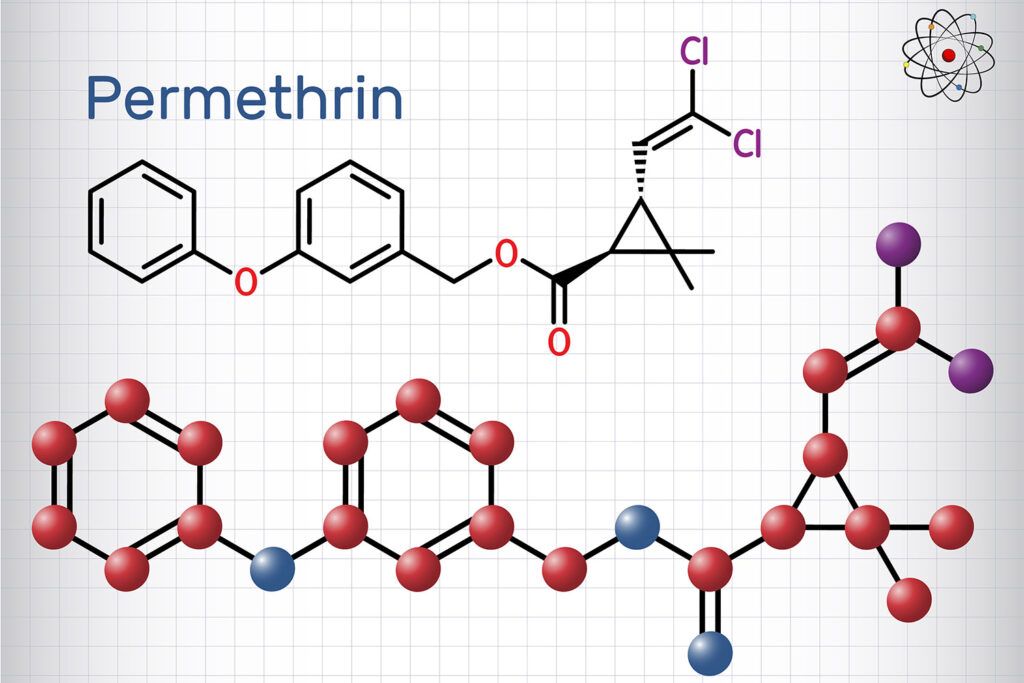
Permethrin is a synthetic pesticide in the pyrethroid family that was first developed in 1973. This man-made chemical is meant to mimic the naturally occurring insect repellent that’s found in the chrysanthemum flower.
Other common pyrethroids include tetramethrin, resmethrin, cypermethrin, and deltamethrin. Unlike some other pesticides that can be harmful to humans and other animals, permethrin is largely considered to be non-toxic to most mammals and birds.
What Does Permethrin Do?
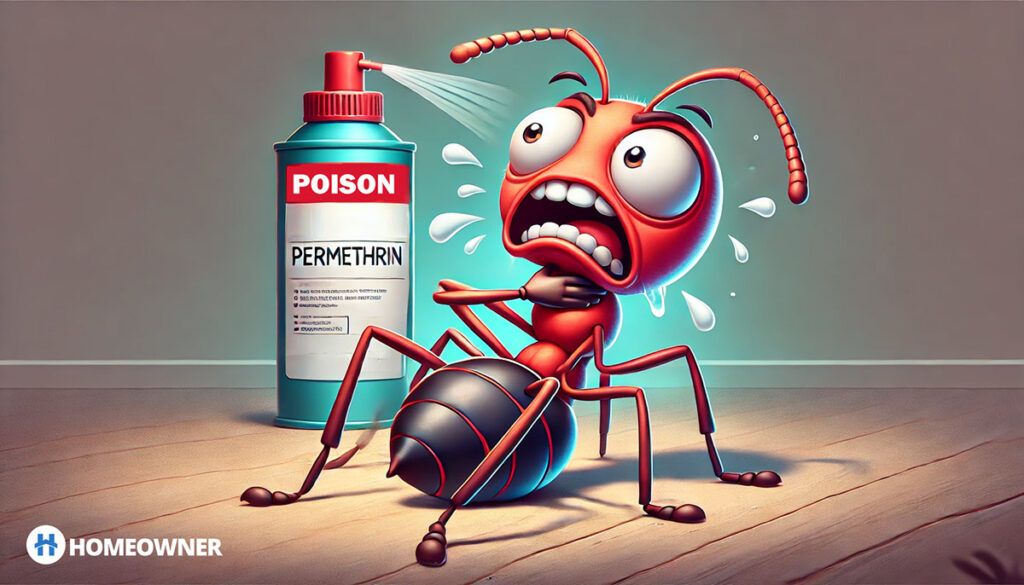
Permethrin is a contact poison found to be effective in killing termites, ticks, mosquitoes, fleas, cockroaches, ants, moths, crickets, and beetles. It does this by attacking and disabling the bug’s nervous system which eventually paralyzes it, produces muscle spasms, and eventually causes it to die. Most pest control products that contain permethrin also have an enzyme called piperonyl butoxide that restricts the insect’s ability to detoxify the permethrin, making it a more effective product.
The natural version of permethrin, called pyrethrin, that’s found in the chrysanthemum flower is considered to be less toxic than its synthetic counterpart and is used in the popular product, Ortho Home Defense. Both products are effective against insects, but permethrin will last longer than pyrethrins because it doesn’t break down in sunlight or air.
How is Permethrin Used?
There are a few different ways you can use permethrin to combat insects: as a topical cream, on clothing, or as a spray. Factors such as the type of insect you’re trying to kill and the environment you’re working in will affect what type of application you choose.
| Application Type | Description |
|---|---|
| Topical Cream | Used for scabies and head lice; applied to the skin or scalp |
| Clothing Treatment | Applied to clothing to kill mosquitoes and ticks; can be purchased pre-treated or self-applied |
| Insecticide Spray | Used on buildings, gardens, feed crops, and for mosquito control; available in various formulations |
Topical Cream Medications
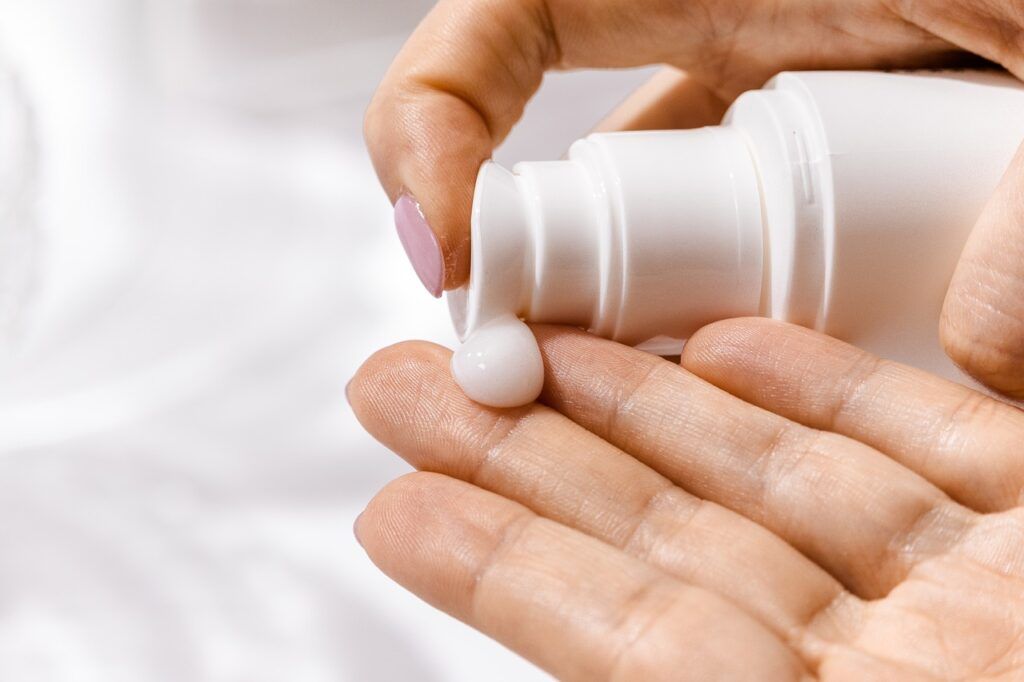
Permethrin cream is a prescription medication that’s used primarily to treat scabies in adults and children over the age of two. You can also purchase over-the-counter permethrin cream that’s used to treat head lice.
Typically, you will only need to apply this cream to your skin once, but you may need more than one application. As with any medication, you should always follow the directions on the label or those given to you by your doctor or pharmacist. This cream can be used all over your body, but you should avoid getting it around your eyes, nose, and mouth.
If using permethrin cream for lice, you should shampoo your hair first, then work the lotion into your scalp and hair and let sit for at least 10 minutes. After this, you can rinse it out of your hair then use a fine-tooth comb to remove any remaining bugs or eggs.
Clothing

Another common application of permethrin is on clothing. When used as a coating on shirts, pants, jackets, and hats, it can kill or disable disease-borne pests like mosquitoes and ticks. These treated items can be purchased directly from retailers, or you can buy the permethrin spray by itself and apply it to your own clothing. Some companies allow you to send in your clothes and they will treat them for you and send them back.
It’s worth noting that because permethrin kills and disables mosquitoes and ticks rather than repels them, the insects are still likely to land on your body even when you’re wearing treated clothing. As an alternative, a product like DEET can be applied to skin or clothing and will actually repel bugs and keep them from biting. However, many studies looking at permethrin-treated clothing found that once these bugs landed, they were “knocked down,” meaning they were either incapacitated or killed almost immediately.
Insecticide Spray
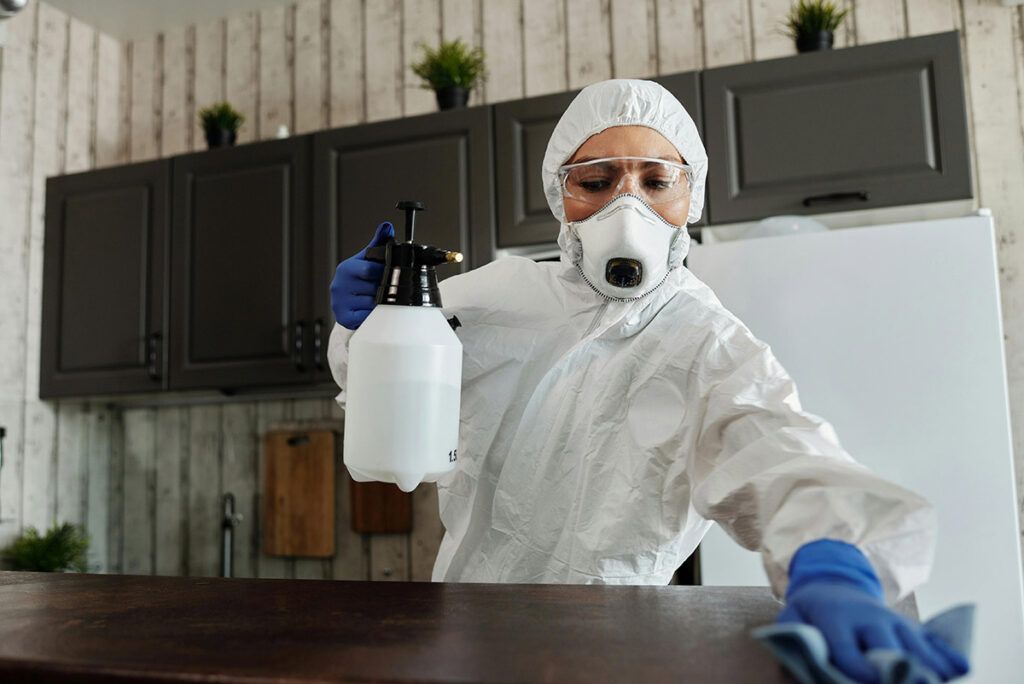
Finally, permethrin can also be used as a spray for use on buildings and gardens to kill insects directly. These permethrin sprays are registered by the Environmental Protection Agency (EPA) to be used on feed crops, livestock housing, and for residential use in homes, gardens, and on pets and clothing. When used in residential applications, you’ll usually purchase the product in a concentrated form which will need to be watered down and used in a handheld pump sprayer. Since it’s highly toxic for fish and other aquatic organisms, it’s restricted for use in many crop applications like nurseries or sod farms due to the risk of run-off into water sources.
Permethrin is also used as an ultra‐low volume (ULV) spray for mosquitoes. It is applied in a backpack sprayer or from sprayers mounted on trucks or aircraft. These ULV droplets are extremely small. Though they contain low levels of permethrin, they’re still able to kill mosquitoes upon contact because the chemicals remain airborne and don’t fall to the ground.
Is Permethrin Safe?
For most applications, permethrin is considered to be safe, but there are a few notable exceptions. Below we’ll outline the safety concerns of using this product for the environment, pets, and humans.
👉 Related reading: Best Drain Cleaner (2025 Review)
Safety Concerns and Precautions
| Area of Concern | Concerns and Precautions |
|---|---|
| Environmental | Harmful to bees and aquatic life; avoid spraying near water sources |
| Pets | Harmful to cats; separate treated dogs from cats, avoid cat exposure |
| Humans | Low irritation risk; mild allergic reactions possible, handle with care |
Environmental Concerns
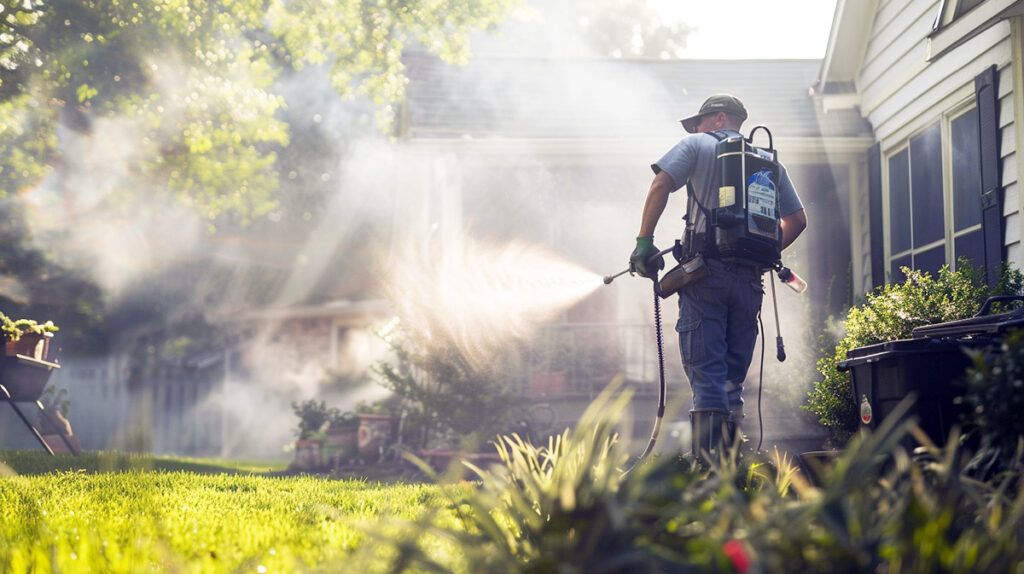
While permethrin can be extremely effective at killing insects like mosquitoes, ticks, and fleas, it can also kill beneficial bugs like honeybees. If you’re spraying areas where bees live, you should try to apply it in the early morning or evening hours when they’re less likely to be active. Permethrin stays in the soil for a long time, so extra care needs to be taken when used on crops or the ground.
Permethrin also poses a huge risk to fish and other aquatic life, you should avoid using the product in or around water sources, or in an area where the rain will wash it away and then run off into a water source. This can be especially important when permethrin is used in mosquito abatement because mosquitoes naturally breed around water sources. The water can absorb the permethrin very quickly and will kill aquatic life.
Luckily, permethrin breaks down quickly when it mixes with water, so it won’t remain harmful for very long. To avoid this, you can cover fishponds or other water sources with a tarp while spraying. Most amounts used for spraying for mosquitos are low, and the droplets are designed to stay airborne. So, even if it did get into water sources, it would pose a very small threat to fish. If you have an outdoor fish pond, you can also relocate the fish while spraying and then put them back in the pond after the spray has dissipated.
Pets

Permethrin is largely safe to use around pets, but it can be harmful to cats specifically if they ingest it, even in small amounts. Unlike other mammals, cats don’t have the same liver enzymes that can effectively break down and metabolize the permethrin and this causes it to linger and build up in the cat’s system for much longer. If your cat has been exposed to permethrin, you’ll generally see signs of this within a few hours. It can cause them to itch and you may notice them scratching their fur or rolling around more in an attempt to get it off them. It can also cause drooling, tremors, or twitching.
To ensure your cats stay safe you’ll need to follow some basic pest control tips anytime you use this product. For example, permethrin is often used to treat fleas on dogs and the products can contain as much as 45% to 60% permethrin, while a similar product for cats only contains 0.1% permethrin. If the treated dog then has contact with the household cat, they can easily transfer the chemical to the cat which can cause skin irritation or the cat may ingest it when they groom themselves.
Because of this, you should either avoid using it altogether or separate your cat and dog from one another until the permethrin has had a chance to work and you’ve thoroughly cleaned your dog. You should also never use a flea product on a cat that’s designed for a dog. If you know your cat came into contact with permethrin, you can wash it off their bodies with dish soap and water, and then call your vet for advice and your next steps.
Humans
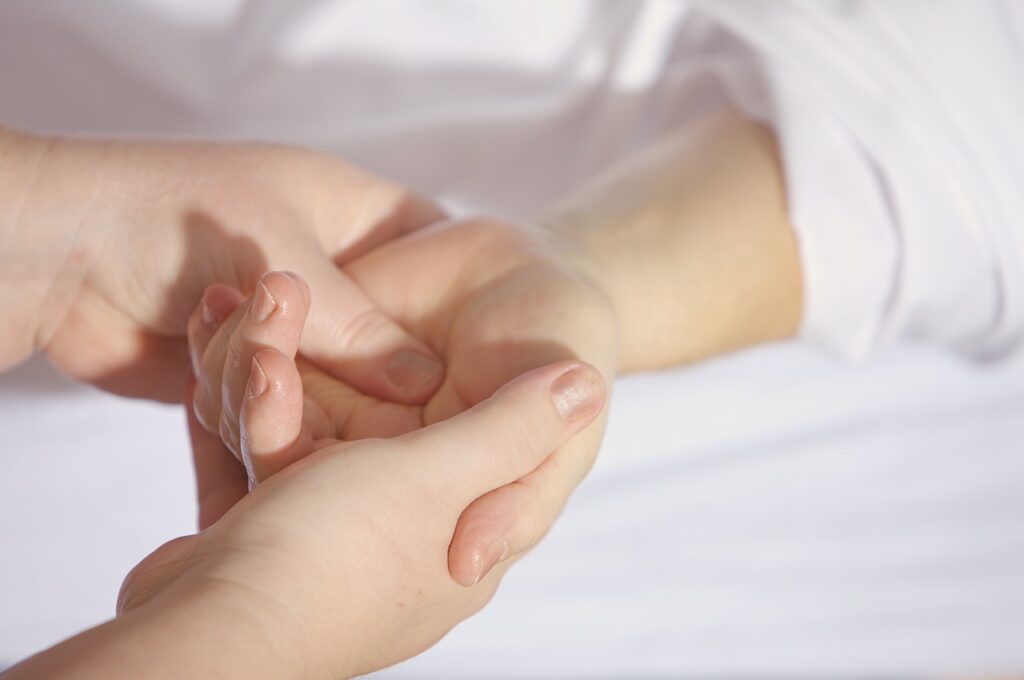
The levels of permethrin used to kill mosquitos are so low that it’s extremely unlikely to cause irritation to humans. However, although this chemical isn’t considered harmful, people should still exercise some general precautions anytime they use it. For example, you may want to have people stay indoors while spraying is happening.
Even with precautions in place, some people do experience mild allergic reactions when they come into contact with permethrin, though these aren’t very common. If you do have a reaction it may show up as a skin rash, a stinging or itching sensation where the product was applied, or a redness or numbness of the area.
If this happens you should remove the affected clothing and wash your body with soap and water. Other people who inhale large quantities of permethrin may experience dizziness, headaches, nausea, or vomiting. It’s also worth noting that permethrin is safe for pregnant or breastfeeding women as well as children.
The EPA does state that permethrin is “Likely to be Carcinogenic to Humans,” based on tests performed on lab animals, although it classifies it as existing below the agency’s level of concern (LOC). This is because the only evidence of cancer occurs in animals that were exposed to large levels of permethrin for long periods of time.
Permethrin for Pest Control
Finding an effective pest control solution is essential if you want to be able to enjoy the outdoors or treat your pets or family members who’ve fallen victim to a lice or scabies infestation. For this, permethrin can be an excellent option.
Permethrin is a versatile and safe option for families since you can use it as a treatment for clothing to kill ticks and mosquitos, a spray for treating your lawn and garden, or as a topical cream to combat lice. That said, there are precautions you’ll need to take when using it around water sources and cats.